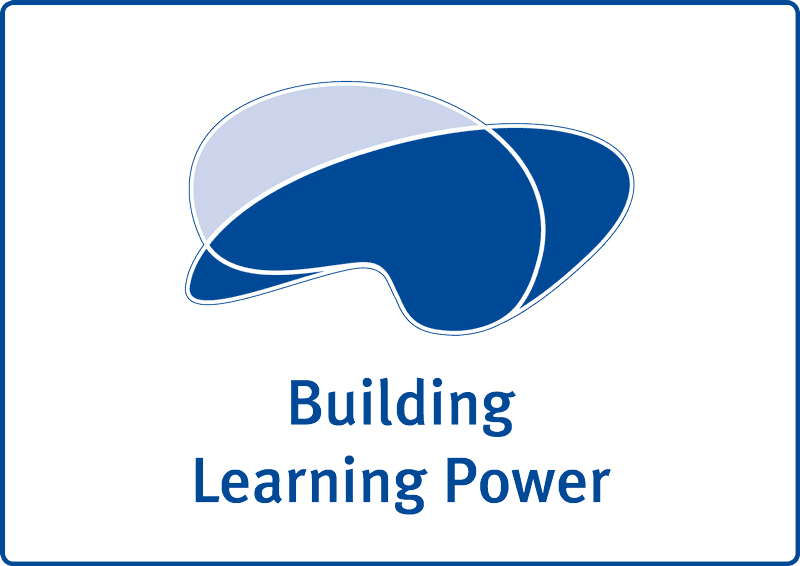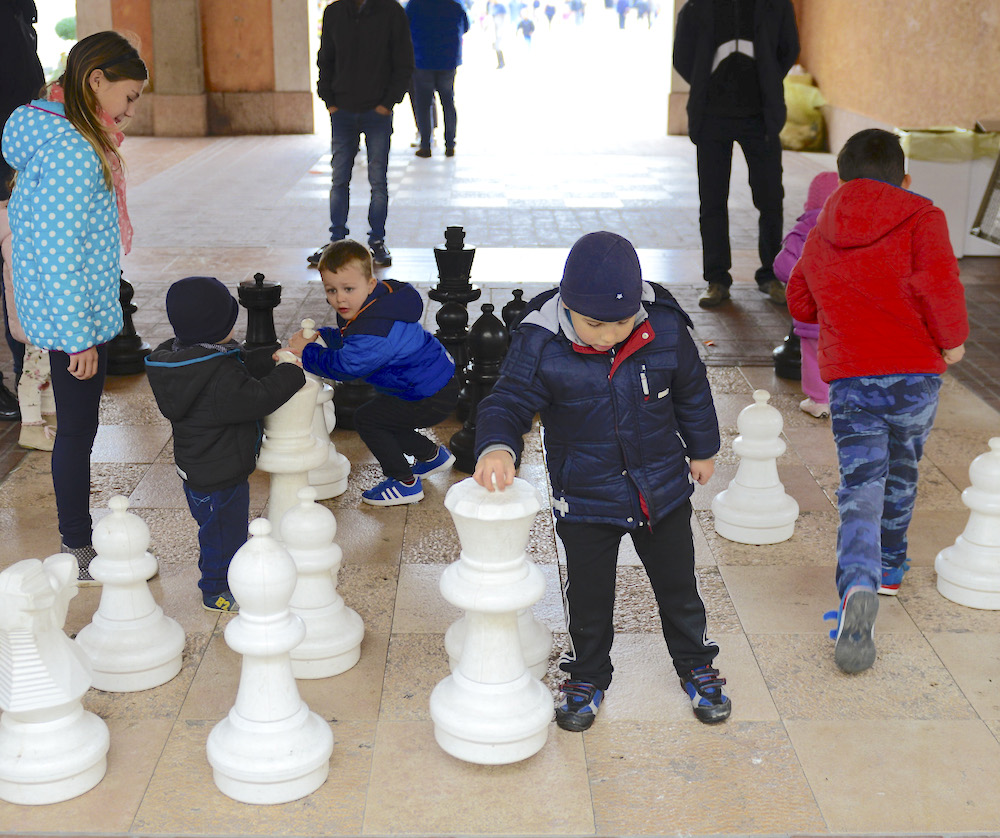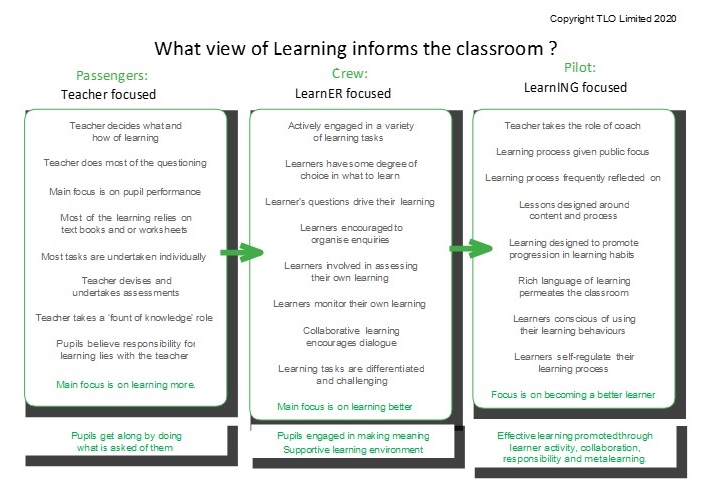Hello and welcome. Thank you for your enquiry about re-establishing BLP in your school.
We’ve pulled together some specific information and questions designed to help you consider the possible actions you might want to undertake next.
Take a look, have a think and then let’s chat
1. Catch up on the basic essentials
Remind yourself…
It’s great to see you wanting to be back in touch with BLP. Over the years the ideas have gradually developed so you might want to take some time out…at your leisure… to remind yourself about the why, what and how of Learning Power and why now, especially after the pandemic disruption, is the time when your students need their learning power more than ever.
Use this link for exploring BLP quickly 7 BIG QUESTIONS – a quick read
Or use this link for a longer read with more detail
If you think the Seven Big Questions would be a useful update for all your staff access just let us know and we’ll share it with them.
2. Take a peak at learning power in action
Accounts from schools
Another good way to catch up and refresh your thinking is to read some of our blogs which capture actual practice of in schools. The following blogs might be particularly useful:
3. Have a think about where you are now
In order to enrich a conversation about how we might assist you in bringing your staff up to date you need to do a bit of hard thinking about your classroom cultures and what they’re like now.
Classroom cultures
Download the culture diagram (opposite).
Think about your own classrooms . . .
- Of the three types of classroom culture – teacher focused, learner focused, learning focused – which best describes classrooms in your school?
- Which of the individual facets of classroom culture would you like to embed further?
- Which would you like to see less of?
4. Estimate how well your are pupils progress
‘Doing’ learning power is all very well, but getting better at doing it; more often; more widely; more skilfully, is quite another matter. Here we invite you to explore a trajectory from low use (I can’t/won’t) to high use (skilful and frequent).
Learning – Poles Apart
Download the Poles Apart diagram (opposite).
Think about the children in your school:
- Where do you ‘guesstimate’ the majority are on each of the 4 trajectories?
- Is any trajectory lagging behind (or surging ahead) of the others?
- Critically – do you think that your pupils move towards the right as they pass through your school?
- And if so – is this progression the result of planned interventions?
- Despite your best efforts, are some pupils remaining on the left-hand side?
5. Talk about options for moving forward
Now you’ve had a think about where your school is now in relation to BLP, it’s a good time to chat about possible ways forward and which might suit you best.
Arrange a meeting
But, just while we are fixing a time to chat, take a quick look at a couple of ideas in 5a and 5b below.
As you look through them think about the deep thoughts you’ve had about your classroom cultures and pupil progression. Coupling the nature of the online courses with where you are now helps to find the most appropriate resource for your school.
Let us know a good time for us to set up a Zoom call with you.
Phone or text
Maryl on 07973 234037 or Steve on 07831 465074
OR
maryl.chambers@tloltd.co.uk or steve.watson@tloltd.co.uk
5a. Option 1: Playing the Learning Power game
‘Playing the Learning Power game’ helps a school to take a school-wide, strategic approach to building better learners and develop learning-friendly classroom cultures. This online programme forms a solid base on which to build wider and more sophisticated approaches. It forms part of a blended learning approach in which the school supports Professional Learning Teams and learning enquiries into classroom practice. It’s a ‘we’re all working on this together’ approach.
This course is accompanied by a resource senior leaders.
Playing the Learning Power game (classroom practitioners)
offers you about a year’s worth of development materials. Since it’s about the ‘whole game’ of learning power rather than just bits and pieces, it introduces all the key learning behaviours before focusing on the four most important for your students’ emotional engagement, their cognitive range, their social adeptness and, critically, their strategic awareness or, what is now often termed, self-regulation: Perseverance; Curiosity; Collaboration and Revising.

Introducing the Learning Power game (strategic issues)
provides resources that leaders might use to re-introduce the purpose, benefits and frameworks of learning power to staff, and to maintain momentum into the future. It has a key section to support senior leaders to think through how they intend to start and sustain interest together with resources such as PPts and resource books to aid an introduction to staff.
5b. Option 2: Helping your learners to…
These online modules are ideal for reminding yourself about the various uses of learning power. You can use them in any order and allow teachers to work individually on the learning behaviours where they feel most rusty.
Helping your learners to…
online modules offer classroom activities, think pieces and questions to help teachers:
- introduce students to learning behaviours;
- use the language of learning effectively with students;
- recognise how learning behaviours gradually grow
- design the use of learning behaviours into the way they teach;
- develop the confidence and skill to help students grow their learning power.
The modules are suitable for both primary and secondary schools with example activities for both.
The modules are available as a whole bundle OR in two bundles: the Foundational 8 and the Finessing 9.
This course is accompanied by a resource for senior leaders.




To give you a flavour of a ‘Helping your learners to’ module, take a look at this one free of charge. It addresses how teachers might help learners to develop the habit of attentive noticing.
Click here to view ‘Helping your learners to Notice’
All other ‘Helping your learners to’ modules are similarly structured.
Explore the bundles ...
The BIG Bundle: All 17 modules.
All these modules tackle introducing learning behaviours, spotting them in your students, a brief introduction into how the behaviour develops, using them productively in lessons, talking about them confidently and planning their use alongside other colleagues. Tackling the full set of behaviours will take a school about two years, and you can return to them again and again.





Bundle #1: The Foundational 8. Helping your learners to . . . . . Persevere, Become Absorbed, Notice, Question, Make links, Collaborate, Revise and Listen.
This bundle of 8 online modules serves to help teachers develop a basic suite of dispositions and inclinations and provide the ‘soil’ in which to develop others.
Bundle #2: The Finessing 9. Helping your learners to . . . . . Imagine, Reason, Manage distraction, Learn Interdependently, Resource learning (Capitalise and Imitate), Empathise, Plan, Distil and Meta-learn.
This bundle of 9 online modules helps teachers develop dispositions and inclinations in more specific ways of learning.








Comments are closed.